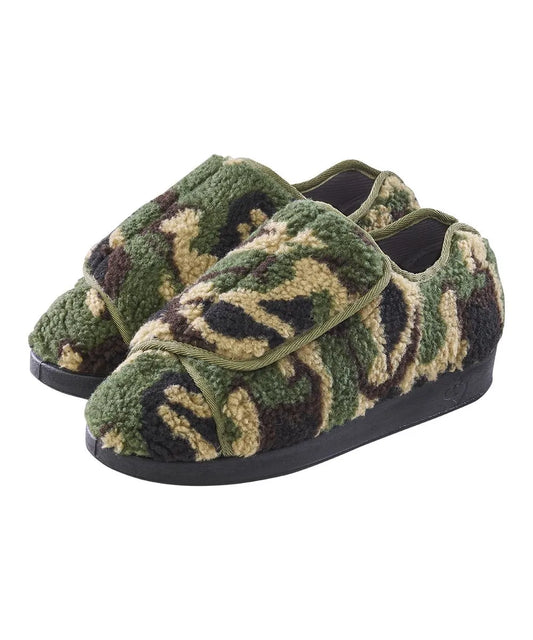Written by Tara Chen & reviewed by Nicole Fernandes
Alzheimer’s disease is a degenerative brain disorder that affects millions of individuals worldwide. As the disease progresses, people with Alzheimer's may have difficulty with coordination, memory, thinking, balance, and recognizing their clothing. This can make dressing a frustrating and challenging task for both the caregiver and the individual with Alzheimer's. You can read more about Alzheimer’s disease in our past blog here.
However, with the use of adaptive clothing, caregivers can simplify the process of dressing and promote independence. Adaptive clothing is designed to address the unique challenges faced by individuals with Alzheimer's and other cognitive impairments, such as reduced mobility, difficulty with fasteners, and sensory issues.
By selecting clothing that is easy to put on and take off, comfortable, and non-irritating, caregivers can help their loved ones maintain their independence, while also ensuring their safety and well-being. In this article, we will explore essential Alzheimer's dressing tips for caregivers, including strategies for selecting appropriate clothing and creating a safe environment.
1. Plan and create a consistent routine
Creating a routine is essential when caring for someone with Alzheimer’s disease. It creates predictability and familiarity for the individual with Alzheimer’s, which helps them feel more in control of their day-to-day activities and feel less anxious. Planning can occur the night before and may consist of laying out clothes in sequential order so that they are easily accessible in the morning. Another option is to create a visual checklist or schedule to help the individual with Alzheimer’s understand the steps required to get dressed.
Moreover, as Alzheimer’s disease progresses, your loved one may have difficulty communicating their preferences or needs. Fortunately, planning can ensure that getting dressed is a stress-free and smooth process. It may also be helpful to purchase clothes with easy-to-use closures, such as magnetic buttons and Velcro.
Having a consistent dressing location and time of day can also provide comfort for the individual with Alzheimer’s. Also, putting on the clothing items in the same order, such as pants first, followed by a shirt, then socks, and finally shoes, can help the individual develop a routine. This allows them to feel secure since they will know what to expect each morning.
2. Choose clothing that is easy to put on and take off
When selecting clothing options for an individual with Alzheimer’s, it can be helpful to keep in mind the type of physical and mobility issues they may have. Purchasing clothes that are easy to put on and take off, can make the process of dressing more easy and less frustrating for everyone involved. For instance, June Adaptive offers comfortable shoes with rear zipper access that allows for an easy-to-access shoe fastening mechanism, which results in less time needed during dressing. June Adaptive also offers a vest with a magnetic closure to allow an easier time opening up the vest and fastening the vest.
Overall, choosing clothing with elastic waistbands, Velcro closure, and front-opening shirts will help the individual with Alzheimer’s have an easier time dressing. Avoiding buttons, complicated zippers, and other similar closures is an important aspect when purchasing clothing.


3. Maintain a calm and comfortable environment
The type of dressing environment is also important for the individual with Alzheimer’s. Having a room or location that is calm and comfortable can reduce anxiety and stress, which makes it easier for the person with Alzheimer’s to get dressed. The location should be well-lit and have minimal distractions. If the individual enjoys music, there can also be soft music in the background to help calm their anxiety. Moreover, aromatherapy can aid in creating a comfortable environment that is pleasant to be in.
Another aspect of maintaining a calm dressing environment is making sure that there is enough time for the individual with Alzheimer’s to get dressed. This prevents them from feeling rushed and it can provide some buffer time in case there are any unexpected difficulties or distractions during the dressing process. This will require planning beforehand to ensure that the extra time allotted to get dressed does not interfere with any appointments or activities afterwards.
4. Break down the process into smaller steps
Getting dressed can be complicated and overwhelming for the individual with Alzheimer’s. By breaking the process of getting dressed into smaller steps, it can become more manageable and less stressful. This may consist of laying down one piece of clothing at a time and providing simple instructions before each step.
5. Offer clothing options to encourage independence
Individuals with Alzheimer’s may feel like they have lost control over their lives due to the consistent help that they require. However, offering clothing options to people with Alzheimer’s, may encourage independence and help them feel empowered. This may consist of having two to three items per clothing category and asking them to select the item that they prefer that day. For example, they can select what colour socks to wear, or the type of print on their shirt. It may also include being more hands-off whenever possible during the dressing process and potentially allowing them to dress.
While it might be tempting to provide aid to your loved one, it is also important to allow them to participate in the dressing process as much as possible. This may help them maintain independence, dignity, and control over their life.
6. Use positive reinforcement
Dressing can be a frustrating task for individuals with Alzheimer’s, despite their efforts and consistency. However, caregivers can provide positive reinforcement to help the individual feel more confident and motivated. For instance, praise can be given when the individual successfully puts on their shirt or remembers the next step in the dressing process.
It is important to note that reinforcement is most effective when it is immediate and specific to the action, such as saying, “Great job remembering to put on your shoes after wearing your socks!” Another aspect of praise is to provide nonverbal cues such as smiles, head nodding, and a high-five to motivate your loved one and help them feel more confident.
Additionally, another method is to provide rewards to your loved one, such as their favourite snack or activity, after completing the process of dressing. This provides them with something fun to look forward to and may help them feel more motivated to complete each step of the dressing process.
7. Avoid overstimulation
Individuals with Alzheimer’s can sometimes be overstimulated by their surroundings and loud noises, so it is essential to help minimize distractions to ease their stress. This may include painting the room a less bright colour, removing distracting furniture patterns, ensuring that dressing is during a time of day that is quiet, and providing calming background music. If the individual with Alzheimer’s has a comfort object, such as a pillow or blanket, it can also be provided to help them feel more calm and relaxed.
Moreover, there may be sensory issues for individuals with Alzheimer’s. Certain fabrics or textures may be disliked and lead to feelings of frustration. It is important to get to know the individual and be observant about which types of fabrics they prefer so that you can adjust accordingly.
8. Be patient and flexible
Caring for someone with Alzheimer’s can be challenging, so it is important to be patient and remain flexible during the dressing process. This includes planning for extra time just in case, adjusting your routine, and trying different dressing strategies until you find one that fits your needs. It may be useful to consult the internet for new ideas or ask your doctor at your next visit for additional tips. Try your best to approach the situation with a calm and positive attitude, and avoid rushing your loved one or becoming frustrated if they have difficulty with certain tasks.
Additionally, as Alzheimer’s progresses, it is important to stay flexible and adjust your approach as your loved one’s needs change. There may be new challenges along the way or new adaptations that need to be made. Staying open and flexible to new ideas can help the individual with Alzheimer’s remain comfortable during the process.
In conclusion, helping someone with Alzheimer’s with dressing can be a challenging process for both the individual and the caregiver. However, by incorporating these essential tips, caregivers can help their loved ones maintain confidence and independence, while also ensuring their well-being. It is important to plan ahead, choose clothes that are easy for their abilities, simplify the process, stay positive, and avoid overstimulation. Moreover, adaptive clothing can be useful to simplify the dressing process and make it quicker for individuals with Alzheimer’s to put on all their clothes.
As the disease progresses, it's important to remain flexible and adapt the dressing routine to meet the changing needs of your loved one. With patience and compassion, caregivers can help improve the quality of life for both themselves and their loved ones with Alzheimer's.
Overall, by using these strategies, caregivers can provide a stress-free and comfortable dressing process to their loved ones, and promote a better quality of life.















